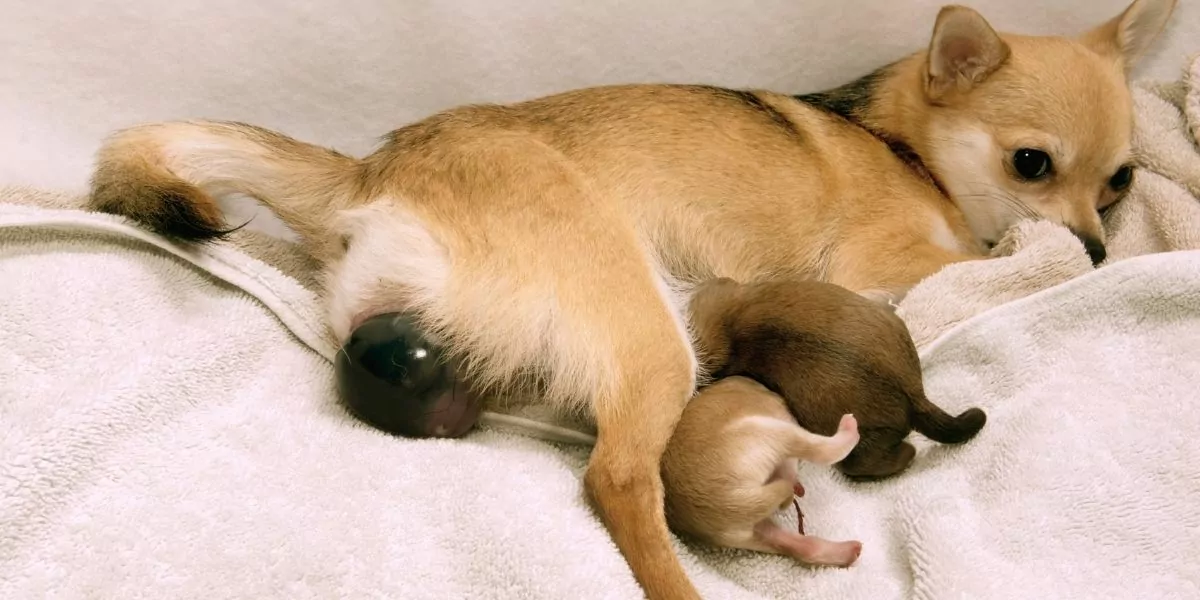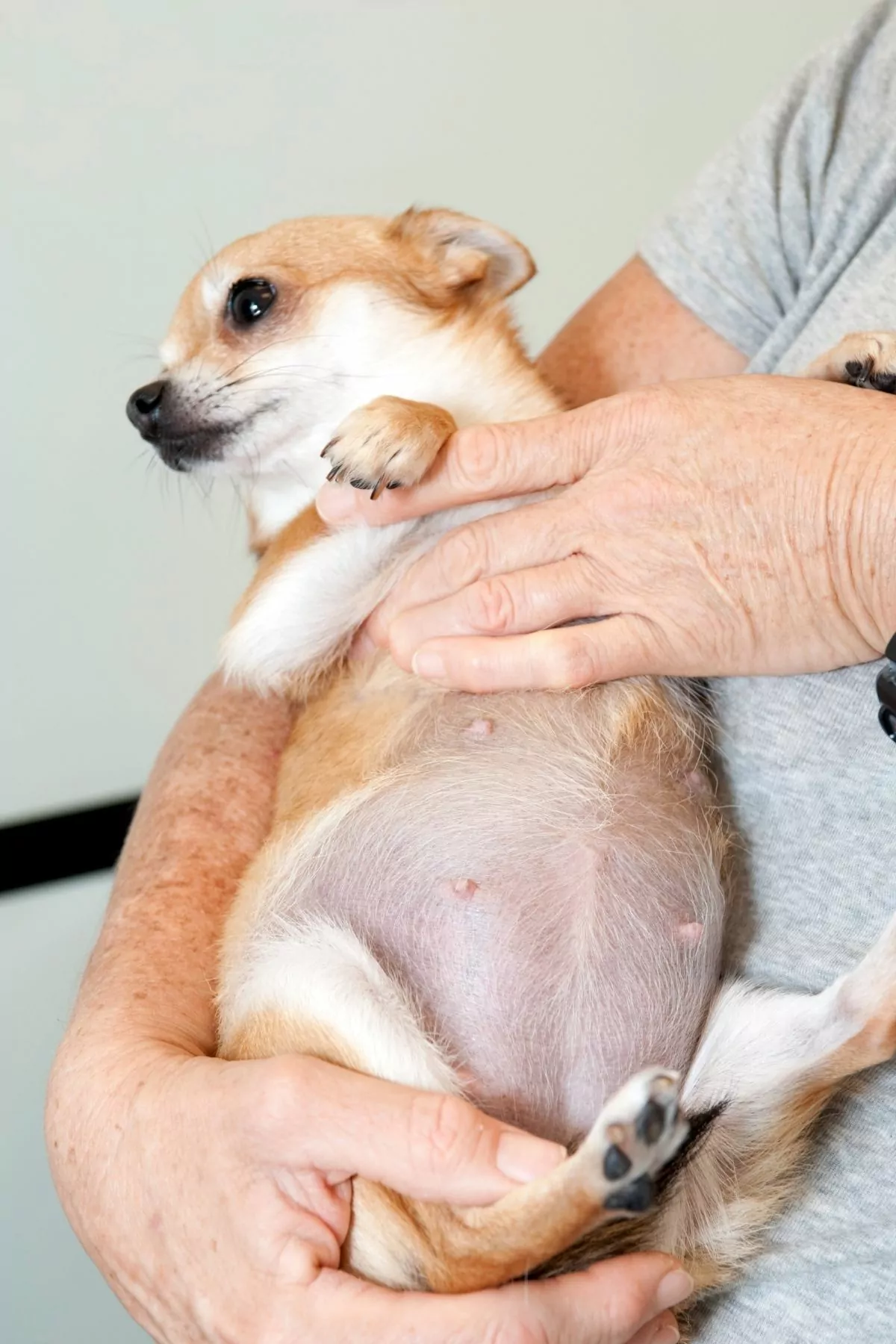What is Oxytocin in Dogs?
Oxytocin is an endogenous hormone produced in the hypothalamus and released from the pituitary gland in response to certain types of sensory nerve stimulation. Like humans, oxytocin for dogs is a part of reproduction-related hormones and plays a significant role during parturition, which we will discuss more in detail in this article.

The Uses of The Oxytocin Injection for Dogs
A synthetic form of oxytocin is used to assist the parturition when it is medically necessary. For example, it is indicated if the dog requires to be induced labor in case of uterine inertia, needs aid to contract uterine muscles during labor, to eject placental material post-delivery, and stimulate the milk let-down reflex.
The Three Normal Stages of Labor in Dogs
Labor consists of three stages.
Stage I
This is when the uterine muscle contractions start and become more frequent and severe while the cervix dilates. This usually lasts for twelve to twenty-four hours. Although the contractions may not be evident, other physical and behavioral signs can be a clue to confirm.
Restlessness, panting, nesting, reclusiveness, inappetence, shaking, and vomiting are commonly seen behavioral changes.
By this time, the dog will have a transparent and watery vaginal discharge.

Stage II
Stage II starts once the cervix is fully dilated. This stage is the ‘active’ labor period, where the contractions culminate and finish with the delivery of puppies. This stage can take as short as one hour or over 24 hours, depending on the number of neonates, their position and size, and the physical state of the bitch.
The standard active labor period consists of 30 to 60-minute intervals between puppies, where you will see pronounced abdominal efforts and an increased respiratory pattern. During this time, the dog may continue to exhibit behavioral signs that were present at stage I. She may also start nursing and grooming neonates.
Vaginal discharge will also continue but may become more colored: Serous (yellow), hemorrhagic (red), or uteroverdin (green).
Stage III
This stage involves the ejection of the placenta. Although, this can happen after the delivery of each puppy and may not be the true final stage of labor until delivery of the last puppy is completed.
What is Canine Dystocia?
Dystocia is a term used to describe a problematic or obstructed labor when the mother cannot complete a normal uninterrupted natural virginal delivery of her young. This condition can be life-threatening for both the mother and her young if not intervened urgently.
What causes dystocia? Causes include maternal and/or fetal factors.
Maternal factors
- Breed conformation
Breeds with an abnormal pelvic canal will likely experience difficulty moving the fetus through their canal during labor. Examples are a narrow pelvic canal in the Boston Terrier, a flattened pelvic canal in Bulldogs and Scottish Terrier, and an elongated pelvic canal in Mastiffs.
- Uterine inertia
This is a condition in which the pregnant dog cannot deliver her fetus due to the inability of the uterine muscle to contract.
Hormonal imbalance, atrophy/weakness/overstretching of the uterine muscle, obstruction in the reproductive tract (e.g., fetus) are some of the possible causes.
Fetal factors
- Size
Oversize fetuses will not be able to fit through the maternal pelvic canal, therefore requiring a cesarean. This is common in crossbred dogs of small breed female and large breed male.
- Conformation
Fetuses with certain breed-specific features will have difficulty passing through the mother’s pelvic canal. For example, a large head, broad shoulders, and narrow hips in French Bulldogs and Pugs, and a large elongated head in Bull Terriers are therefore prone to cause dystocia.
Fetuses with a misshaped figure as a result of a congenital anomaly may face the same challenge.
- Position
The fetus can be in a Breech (Bottom-first) position or transverse (Horizontal) position inside the uterus. This is unlikely to cause any problem during pregnancy but will be an issue at the time of labor as they would likely be stuck in the pelvic canal; hence the risk of complications during a vaginal birth attempt is high.
The exact cause of the fetus settling in these abnormal positions is unknown, but it is suggested that factors like the volume of the ammonitic fluid, the number of the litter, and the shape of the uterus may play a part in abnormal fetal positions.

Side Effects and Precautions of Oxytocin in Dogs
The use of synthetic oxytocin is not warranted in the following scenarios:
- Dogs with known hypersensitivity.
- Dogs that are on certain types of medications that are known to interact with oxytocin negatively. (e.g., Beta-adrenergic agonists that relax smooth muscles.)
- Dogs with hypoglycemia or hypocalcemia.
- Dogs with a small pelvis.
- Abnormal presentation of the fetus.
- Oversized or mis-proportioned fetus.
- If a cesarean is a safer option.
- When the cervix has not dilated.
Even when it is indicated, maternal and fetal health must be under constant monitoring to ensure their safety and early intervention in case of adverse effects. Adverse effects can be as mild as a cramping pain/discomfort to something more severe such as vomiting, pyrexia, seizures, uterine rupture.
The Available Forms of Canine-Friendly Oxytocin
There are currently several synthetic oxytocin drugs available for veterinary use. Commonly known ones are Syntocinon and Pitocin. Syntocinon is available in both injectable and aerosol (nasal spray) forms, but Pitocin comes only in an injectable form.
Oxytocin is a prescription drug and can and should only be prescribed by a veterinarian. Therefore you must consult with your veterinarian first.
How Does Oxytocin Work?
As mentioned earlier, the body produces and releases its own endogenous oxytocin during labor. It contracts the uterine muscles to progress fetus movement and remove placental materials after the delivery of puppies. Oxytocin also contracts the smooth muscle around the mammary glands to aid the movement of the milk into the milk duct, which then stimulates the mother to lactate.
Synthetic oxytocin mimics these actions of the oxytocin when administered.
How to Store Oxytocin Properly
Oxytocin is sensitive to light and does not tolerate a high temperature. Therefore it must be stored at room temperature (below 77F°) and away from direct sunlight. It needs to be disposed of after 28 days of opening or if its expiration date has passed.
How Much Oxytocin Can You Give to a Dog?
There is a wide range of doses for oxytocin, which depends on the stage of labor and the underlying reason for the use.
Commonly used dosage for dogs ranges between two to 20 units by intravenous, intramuscular, or intranasal. A repeated dose may be given a minimum of 30 minutes after the initial dose if necessary.
Precaution is necessary as an overdose will lead to adverse effects that may be severe and detrimental to both maternal and fetal health.
Conclusion
Synthetic oxytocin is a commonly used veterinary drug that has the same property as endogenous oxytocin. The drug can effectively assist female dogs during the parturition when used appropriately.
It is essential to keep in mind that the drug is only to be used when indicated by a veterinarian and the risk of side effects and adverse reactions are not to be ignored.
